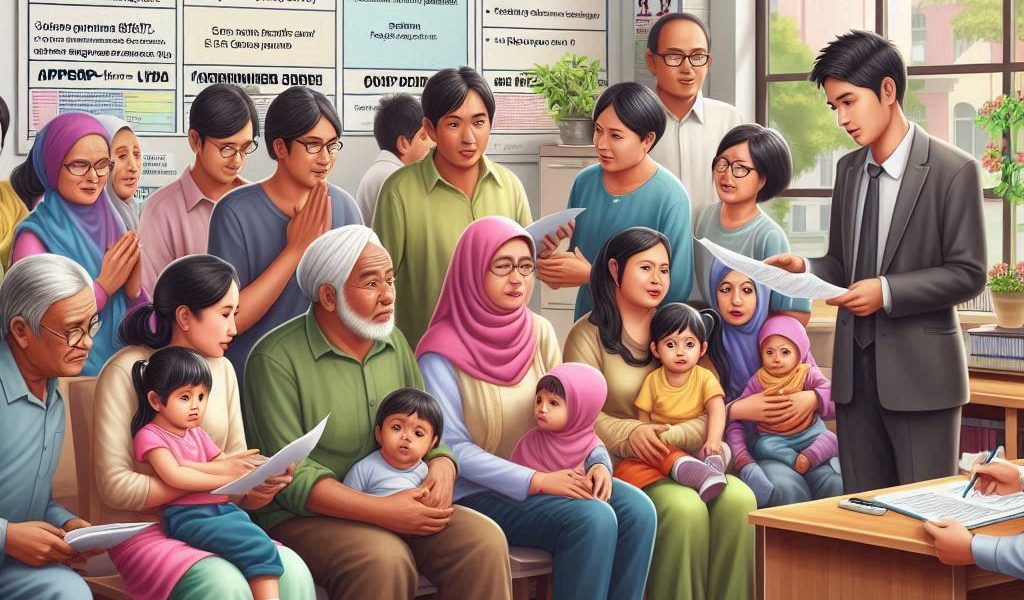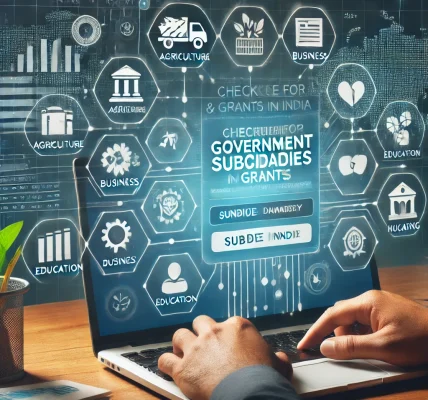Introduction
In a country like India, where economic disparities still exist, the government has developed several schemes to ensure that the low-income population gets financial support. These government schemes aim to uplift families, provide them with access to basic needs, improve their living conditions, and promote financial independence. Subsidies and grants are essential tools to provide financial assistance to these families. In this article, we will explore the top government schemes for low-income families in India and guide you through the process of applying for subsidies.
Why Government Subsidies Matter for Low-Income Families?
Government subsidies play an essential role in improving the lives of low-income families. They offer a variety of benefits, such as:
- Affordability of Basic Needs: Subsidies ensure that families can afford essentials like food, healthcare, education, and housing.
- Promotion of Financial Inclusion: By providing financial support, subsidies help low-income individuals participate more fully in the economy and increase their income levels.
- Support in Crisis Situations: Government schemes can act as a safety net during times of economic instability, such as during natural disasters or the COVID-19 pandemic.
- Encouragement of Education and Skill Development: Many schemes provide financial assistance for education and skill development, enabling individuals from low-income families to improve their employability.
Types of Government Subsidies for Low-Income Families
There are numerous government schemes designed to assist low-income families in India. These subsidies can be categorized based on their purpose:
- Food Subsidies: To ensure that families can afford basic food grains.
- Housing Subsidies: To help low-income families build or improve their homes.
- Healthcare Subsidies: To provide affordable healthcare to those who cannot afford medical treatment.
- Education Subsidies: To support children from low-income families in accessing quality education.
- Energy Subsidies: To assist families with the cost of electricity and other utilities.
Top Government Schemes for Low-Income Families
1. Pradhan Mantri Ujjwala Yojana (PMUY)
Objective: PMUY was launched by the Government of India to provide free LPG connections to women from Below Poverty Line (BPL) families.
Key Features:
- Aimed at reducing the health hazards caused by unclean cooking fuels like firewood and coal.
- Provides financial assistance to families for purchasing LPG stoves and refills.
Eligibility:
- The family should fall under the BPL category as per the SECC (Socio-Economic Caste Census).
- The beneficiary must be a woman head of the household.
How to Apply:
- Applications can be submitted online via the PMUY website or offline at authorized LPG distributors.
- Required documents include Aadhaar card, BPL certificate, and bank details.
2. Pradhan Mantri Awas Yojana (PMAY)
Objective: This scheme aims to provide affordable housing to low-income families across urban and rural India.
Key Features:
- Offers subsidized loans to families for constructing or purchasing homes.
- Interest subsidies are offered on home loans for economically weaker sections (EWS) and low-income groups (LIG).
Eligibility:
- Families should belong to the EWS or LIG categories, as defined by the government.
- Preference is given to women beneficiaries, scheduled castes, scheduled tribes, and other marginalized communities.
How to Apply:
- Applications can be submitted through the PMAY portal or via banks and financial institutions.
- Required documents include Aadhaar card, income certificate, and proof of residence.
3. National Social Assistance Programme (NSAP)
Objective: This scheme aims to provide social assistance to elderly, disabled, and widow persons from low-income families who do not have any regular means of subsistence.
Key Features:
- Offers monthly pensions to eligible individuals.
- The Indira Gandhi National Old Age Pension Scheme (IGNOAPS), Indira Gandhi National Widow Pension Scheme (IGNWPS), and National Family Benefit Scheme (NFBS) are components of this program.
Eligibility:
- Elderly persons, widows, and disabled individuals belonging to BPL families.
- Age criteria for elderly persons: 60 years and above for IGNOAPS.
How to Apply:
- Applications can be submitted through district administration or Gram Panchayat.
- Required documents include Aadhaar card, age certificate, income proof, and BPL certificate.
4. Ayushman Bharat Yojana (PMJAY)
Objective: This flagship health insurance scheme provides free health coverage to low-income families across India.
Key Features:
- Covers up to ₹5 lakh for medical expenses for a family of up to 5 members.
- Beneficiaries are provided cashless access to healthcare services in empanelled hospitals.
Eligibility:
- Families identified in the SECC 2011 (socio-economic caste census) list.
- Rural families and urban poor families without any health insurance coverage.
How to Apply:
- Visit the PMJAY website or contact local health centers for application.
- Required documents include Aadhaar card, mobile number, and income certificate.
5. Janani Suraksha Yojana (JSY)
Objective: JSY aims to promote institutional deliveries by providing financial assistance to pregnant women from low-income families.
Key Features:
- Provides cash assistance for women who deliver in government-approved health facilities.
- The scheme covers transportation, maternal health care, and post-delivery services.
Eligibility:
- Women from BPL families or those residing in rural areas.
- Pregnant women who opt for institutional deliveries at government health centers.
How to Apply:
- Beneficiaries can apply through Aanganwadi workers or local health centers.
- Required documents include Aadhaar card, BPL certificate, and delivery details.
6. Food Security Schemes (NFSA)
Objective: The National Food Security Act (NFSA) aims to ensure that every household receives subsidized food grains.
Key Features:
- Provides ration cards to eligible families, ensuring access to food at subsidized rates.
- The scheme is designed to provide wheat, rice, and other food grains to families at a subsidized rate.
Eligibility:
- Below Poverty Line (BPL) families and those who meet the criteria established by the state and central governments.
How to Apply:
- Applications can be made at the ration shop or through the state government portal.
- Required documents include Aadhaar card, proof of residence, and income certificate.
How to Apply for Government Subsidies for Low-Income Families?
Step 1: Determine Eligibility
Before applying for any scheme, check the eligibility criteria for the particular subsidy. Many subsidies are specifically designed for BPL families, women-headed households, or other marginalized groups. Understanding the eligibility requirements will save you time and effort.
Step 2: Gather Required Documents
Most government schemes require specific documents such as:
- Aadhaar card
- Income certificate
- BPL certificate
- Bank account details
- Ration card (in some cases)
- Proof of residence (for schemes like PMAY)
Make sure to have these documents ready before applying.
Step 3: Apply Online or Offline
Many government schemes allow online application through their official websites, such as the PMAY portal or Ayushman Bharat website. Some schemes require you to apply offline at government offices or local agencies.
Step 4: Follow Up on Your Application
After submitting your application, keep track of the status through the respective scheme’s portal. If necessary, visit the local government office for updates.
Conclusion
Government schemes for low-income families in India provide crucial financial support to help families lead a more stable and fulfilling life. Whether it’s for housing, healthcare, education, or food, these subsidies and grants are designed to assist those who need it the most. By understanding the eligibility criteria and the application process, you can take full advantage of these schemes and ensure that you are receiving the benefits entitled to you.
If you are a low-income family in need of support, don’t hesitate to explore these options and apply for the subsidies that can make a significant difference in your life. Government schemes are designed to help you, and all it takes is a little effort to ensure that you benefit from them.



